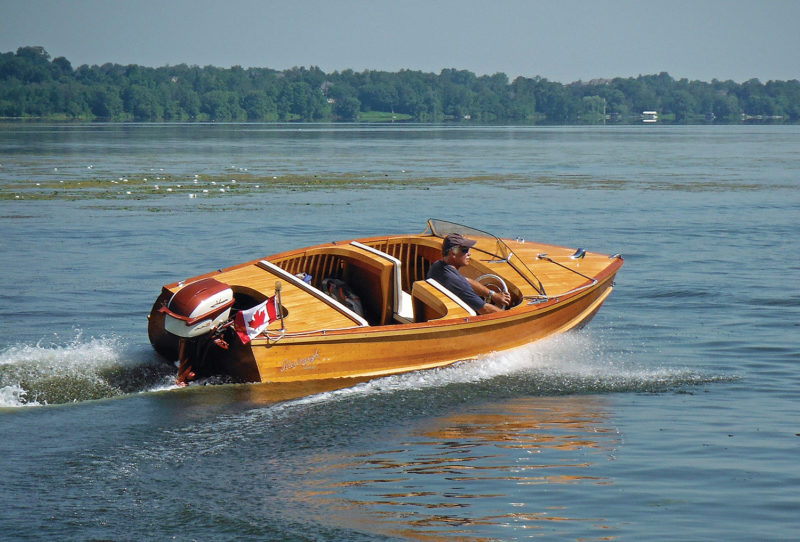 John Summers
John SummersThis 15′ cedar-strip Peterborough Nomad by Woodwind Yachts was built on a mold created from an original Nomad launched by the Peterborough Canoe Company in 1958.
As the market for recreational canoes expanded in the later years of the 19th century, two construction techniques emerged as builders responded to the challenges of manufacturing canoes on an industrial scale. The Old Town (Maine) Canoe Company and the Chestnut Canoe Company of Fredericton, New Brunswick, developed wood-and-canvas construction. In Peterborough, Ontario, and nearby towns, builders such as The Ontario Canoe Company, later to become the Peterborough Canoe Company, pioneered cedar-strip construction. This technique was based on John S. Stephenson’s 1883 patent for “Longitudinal Cedar Strip” construction (hereafter referred to simply as “cedar-strip”), which was awarded Canada Patent No. 32701 and U.S. Patent No. 292183.
Although there were many builders who employed the technique, the Peterborough Canoe Company became the best-known proponent of it, and their cedar-strip boats and canoes were sold around the world. By the mid-1950s their catalog offered cedar-strip hulls in a wide range of sizes and styles from open outboard boats to small cabin cruisers. Stephenson’s patented method, originally conceived for canoe construction, turned out to be a darned good way to build small wooden boats in general, and lots of them, too. No one will ever know exactly how many cedar-strip watercraft the Peterborough-area companies turned out, but it is certainly in the tens of thousands. The cedar-strip outboard became the archetypal boat of cottage country in central and eastern Canada, and today many are still on the water. They are often well represented in the displays at antique and classic boat shows.
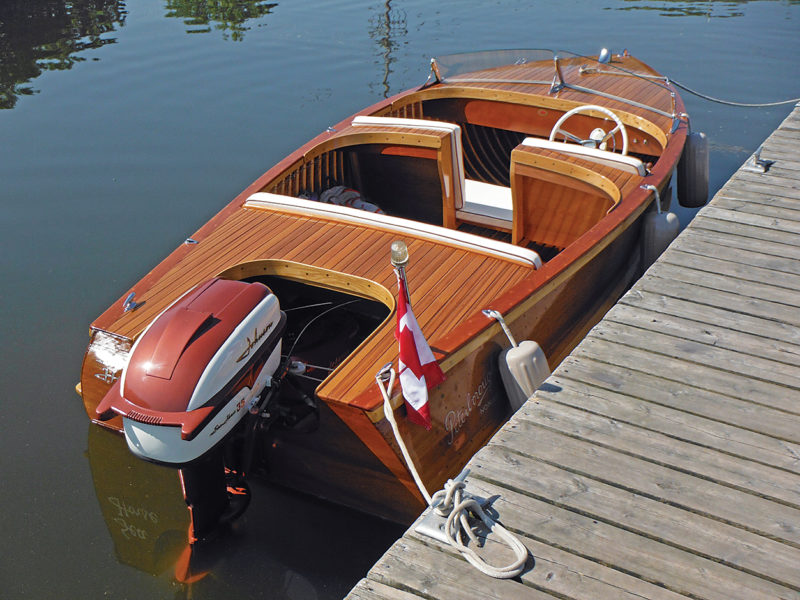 John Summers
John SummersThe walk-through bridge-deck configuration is convenient for changing places under way.
Over the last 30 years, Ken Lavalette and his crew at Woodwind Yachts in Nestleton, Ontario, have restored more than 50 cedar-strip boats, many of them made by the Peterborough Canoe Company. Well loved and well used, they often come into his shop more than a little worse for wear and leave looking a whole lot better. As he worked on these boats, it occurred to Ken that often the number of hours required to restore them wasn’t far off what it would take to build one from scratch. At 15‘ LOA and 5‘ beam, the Peterborough Nomad runabout was big enough to carry a few people and their gear, but small enough to be easily trailered and stored. Was there a market for a new, traditionally built, cedar-strip runabout?
Lavalette decided to build a boat to test the market, so he measured an original 1957–58 Nomad and built the robust, nearly solid mold required for this method of construction. The Nomad was from the upper end of the Peterborough Canoe Company’s offerings, just below the Niagara model, which was advertised as “The Elite of the Fleet.” Of the Nomad and her shorter sister the Meander, the 1959 catalog said, “Where price is a consideration and an attractive craft, not quite as advanced in styling as our deluxe Sportliners, is desired, we offer our 14‘ Meander and 15‘ Nomad. Both models are proven designs and will give fast, seaworthy service.” Owners could have the boat as an open outboard or add steering, windshield, and deck hardware to turn the Nomad into the double-cockpit runabout described here. The sail-away price in 1959 was $730.
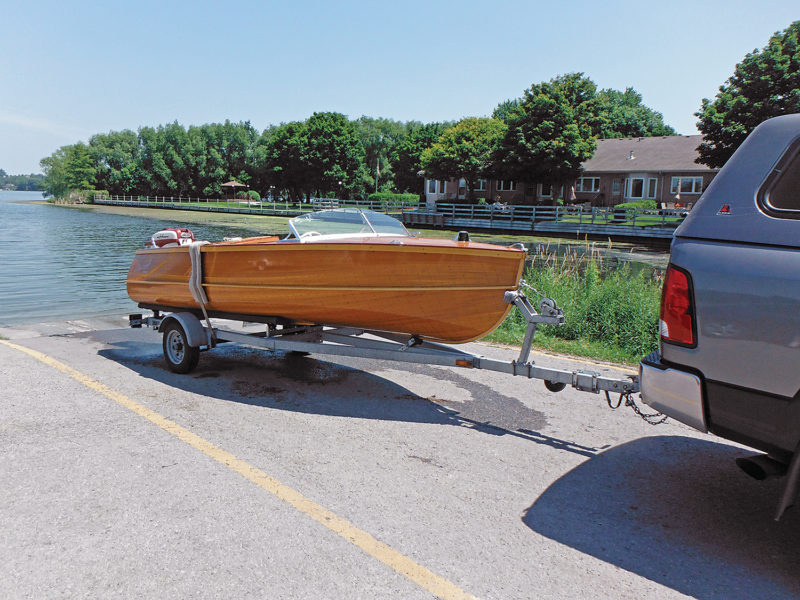 John Summers
John SummersWith an all-up weight of between 400 and 500 lbs, depending on the motor, the Nomad trailers and launches easily.
Stephenson’s cedar-strip building method differs from contemporary wood-strip epoxy construction. The narrow and relatively thin planks, most often of red cedar, have ship-lapped edges and are fastened to steam-bent ribs. For each design, builders developed several plank shapes that together could be combined to cover the entire hull. This eliminated spiling each plank and meant that stock could be precut in large quantities to expedite construction. The shape of the planks, widest in the middle and tapered toward each end, meant that they could be started parallel to the keel and finish parallel to the gunwale without the need for stealers or the “football” shape commonly seen in wood-strip epoxy construction. It also avoided having the ends sweep upward and run out along the sheerline, as was sometimes done by other builders.
Despite the fact that he’d repaired many cedar-strip hulls, Lavalette had never built one from scratch, so there was some calculating to be done. The real intellectual property in cedar-strip construction lies in the mold itself and the plank patterns, so Lavalette set about lining off his mold to determine the plank shapes required. The prototype boat was built with two distinct plank shapes, but his later hulls have four or five. This more evenly divides the heavily curved area at the turn of the bilge, and avoids a somewhat unsightly downward turn of the hood ends as the planking approaches the bow. It’s the kind of detail only another boatbuilder would notice, but he wants to get it right and admits that he’s relearned on the job some of the tricks that the old factory builders figured out a long time ago.
Though he left the hull shape unchanged from the original, Lavalette slightly increased the scantlings of the stem, keel, ribs, transom, planking, and deck, based on what he had learned from his many restorations of this type. He made the stem from white oak laminated with epoxy, and the keel was solid white oak, notched for the ribs before being fastened to the mold. The half-round ribs were also oak and the transom mahogany. He steamed and bent the ribs into the notches on the keel, tucking their ends into cleats fastened to the mold at the sheerline. Before planking, he thoroughly varnished the back sides of the ribs and the end-grain of the transom.
Lavalette made the decks and planking from red cedar and the cockpit coamings from oak. The dashboard and other cockpit trim was mahogany. Building for longevity, he precoated each piece of wood with three coats of varnish prior to assembly. Later he’d give the whole hull structure another four coats before launching.
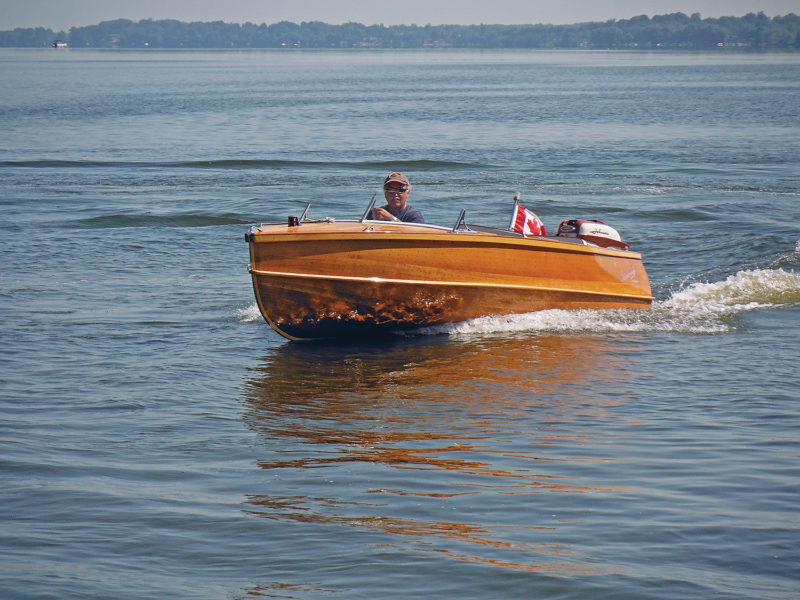 John Summers
John SummersWith a rebuilt 1950s 35-hp Johnson outboard, the originally recommended power, the Nomad promises solid performance, with a top speed in the high 20s.
The Nomad built by Woodwind Yachts is simple and elegant inside, with only the bare minimum of hardware and fittings. The new hull is complemented by refurbished original 1950s running gear. Lavalette prefers to recondition period two-stroke outboards for the boats he sells, and he sticks with the original builder’s recommendation of a 35-hp motor. One customer wanted and received a four-stroke 50-hp unit, but that’s not recommended for everyone.
The boat trailers and launches easily. Underway, it can take a while to get to know the original controls, especially if you’re accustomed to a modern single-lever control and Teleflex steering. Because the Johnson shift unit has separate levers for the throttle and gear shift, and will only shift at very low rpms, you need to plan a little farther ahead when coming in to a dock. The pulley-and-cable steering also takes a bit more time to respond, but you’ll get the hang of it soon enough.
Underway, the boat feels solid and reliable. Though 25 mph is not at all fast by today’s standards, it’s a speed that will get you where you want to go and still let you have a pleasant conversation on the way. It might also save enough on gas, even with an older two-stroke, to let you pay for dinner when you get there. The Nomad turns and banks cleanly without skidding and, once the manual trim on the motor is adjusted, planes out to a nice level ride. With simple lines and an elegant all-bright finish, the boat is a head-turner both on the water and on the road. Because they were so popular, these cedar-strip boats seem to elicit fond recollections from onlookers.
As a modern classic, the Nomad combines the beauty of tradition with the durability and integrity of a brand-new boat. If you’re looking for a beautiful but also eminently practical small runabout, the Peterborough Nomad could be the boat, and Woodwind Yachts would be happy to build one for you. If you would like to do a good deed by finding an original one that is in need of a new home and a little work, that would be a good thing too. Commissioning a new one or refurbishing an old one will make the boating world a better and more attractive place.
New Peterborough Nomads built in the traditional longitudinal cedar-strip technique and equipped with rebuilt 1950s outboards are available from Woodwind Yachts. Used cedar-strip boats in a variety of sizes and configurations can often be found for sale in classified ads and at antique and classic boat shows and auctions.
Particulars:
LOA 15′ 3″
Beam 5′ 3″
Draft 6″
w/outboard 18″
Power 35-hp
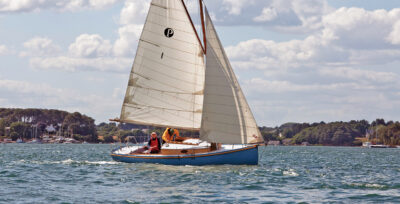
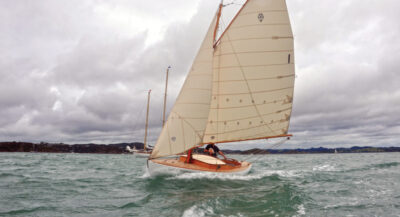
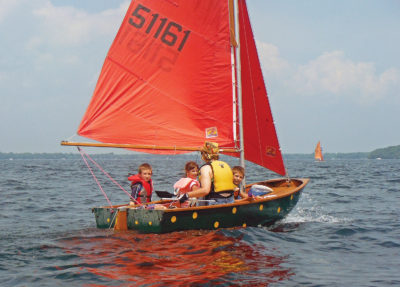
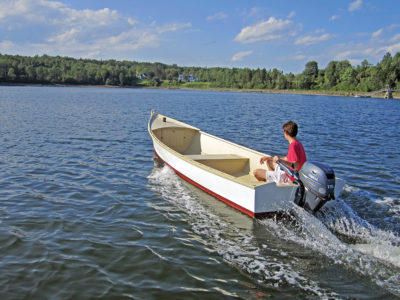
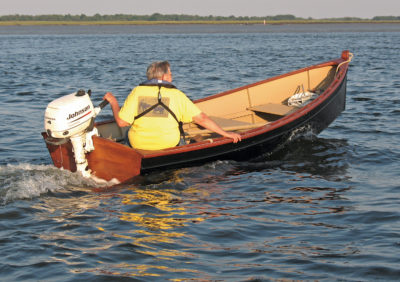
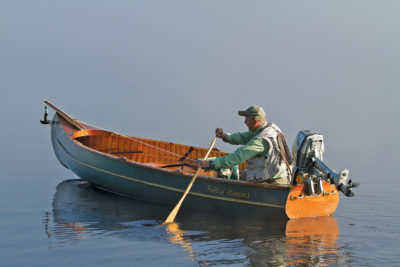
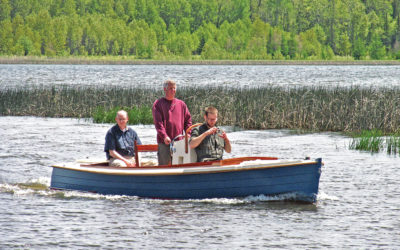
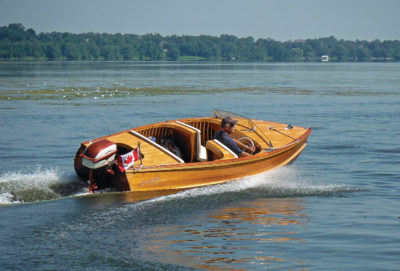
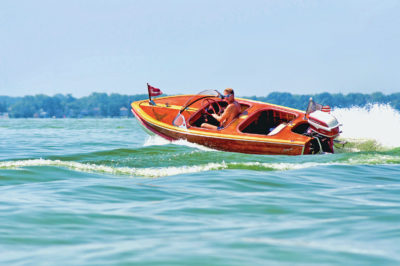
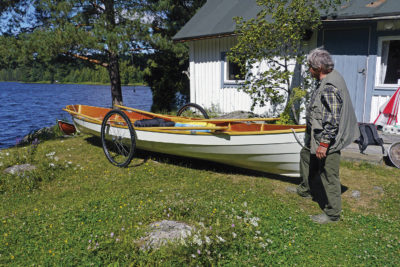
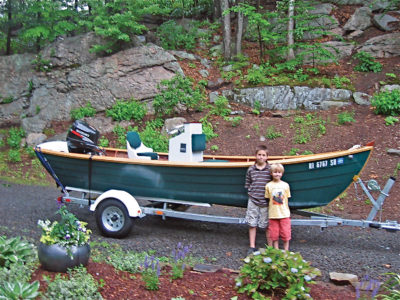
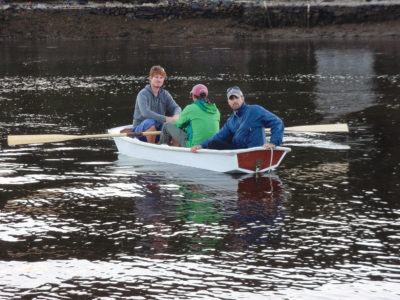
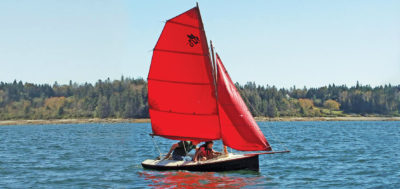
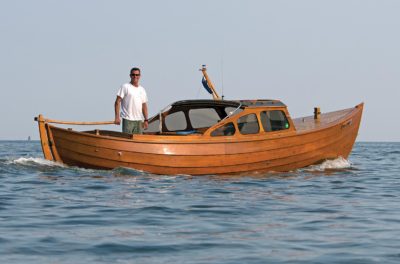
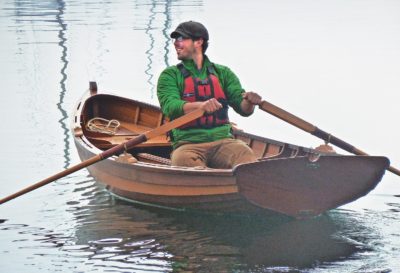
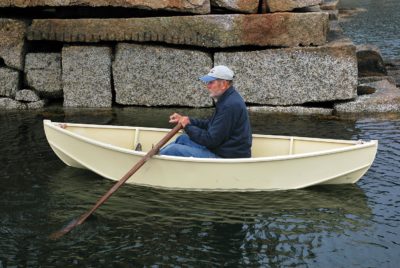
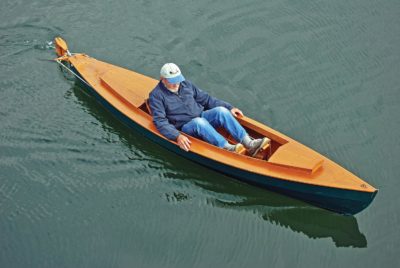
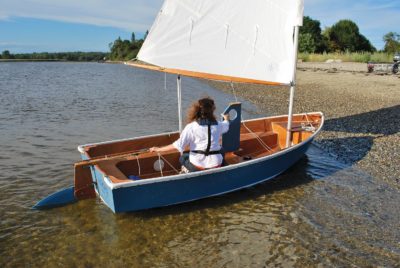
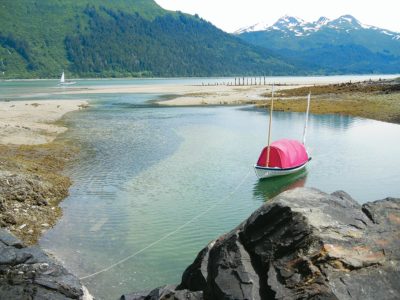
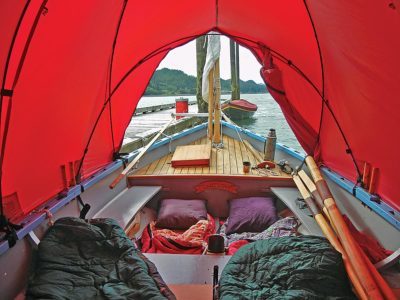
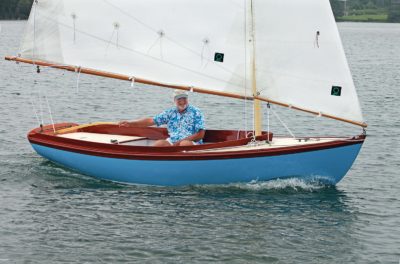
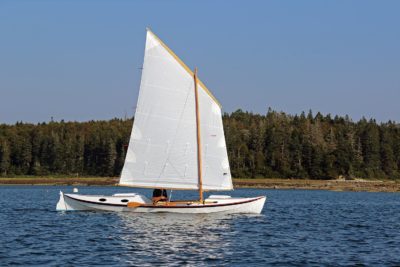
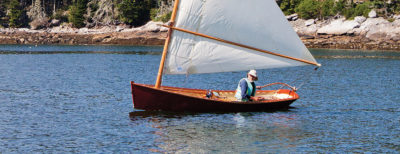
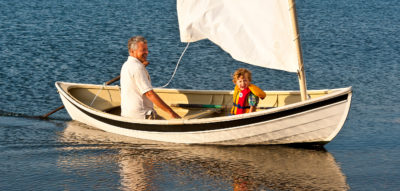
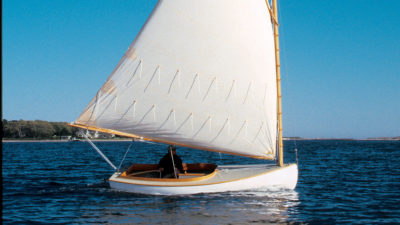
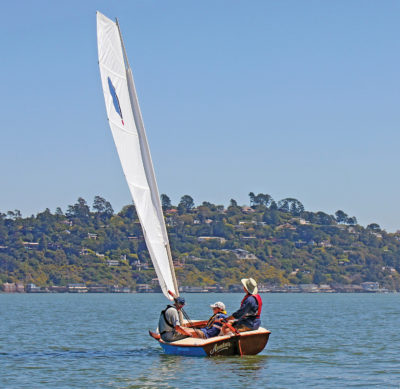
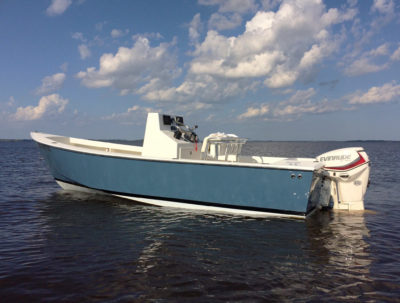
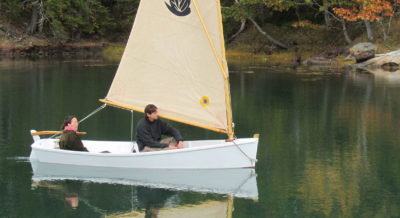
Join The Conversation
We welcome your comments about this article. If you’d like to include a photo or a video with your comment, please email the file or link.